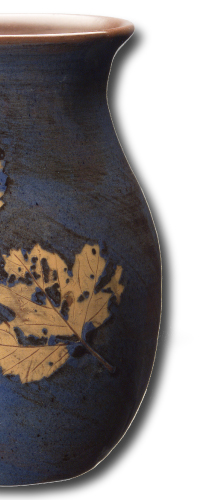

Training
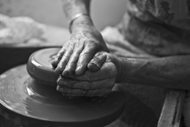
Late 1960’s – Studied ceramics at Bournemouth under David Ballantyne & Peter Stoodley
Late 1960’s – Workshop practice during one summer with Alan Caiger-Smith, what a privilege! His freedom with the brush proved to be the biggest influence on my subsequent work.
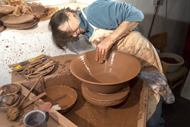 1970’s – First workshop at The Pumphouse, Avon Dassett near Banbury under the name Liz Blundell.
1970’s – First workshop at The Pumphouse, Avon Dassett near Banbury under the name Liz Blundell.
1999 – Opened present workshop in part of former water mill near Chipping Norton. Made dozens of millennium mugs!
2006 – A year of experimentation & development of completely different range of coloured slips.
Technical Information
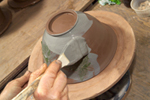
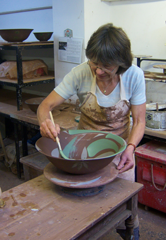 I use valentines 636 red earthenware clay, as it has some fireclay incorporated which gives good warp resistance at 1110 degrees.
I use valentines 636 red earthenware clay, as it has some fireclay incorporated which gives good warp resistance at 1110 degrees.
All the pieces are thrown by hand on the wheel, and decorated at the ‘leatherhard’ stage with a range of Slips coloured with metal oxides or stains.
For the slips I use a powdered white earthenware clay as the base, and add oxides to achieve the colours i want. For instance, copper oxide plus manganese dioxide for the deep green speckled slip. I also use a black slip based on the red clay body.
I almost always brush the slips, using a range of flat hakes. I enjoy the way the curve of the pot or bowl influences the arc of the stroke.
I use real leaves pressed into the slip to leave a print, and paint over with more slips thus using them as a resist. Leaves are always removed before firing.
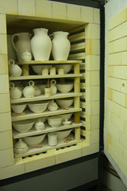
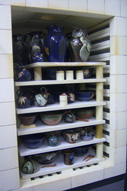 Before and after firing
Before and after firing 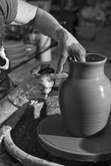
Final colours are not obvious until after the second firing (with a transparent glaze) to 1110oC, plus and extended soak (or dwell) at temperature to achieve heatwork equivalent to 1120oC.
The pots are carefully designed for use and are food and dishwasher safe.
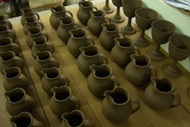
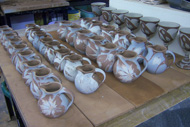
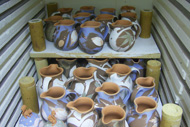 (left to right: leatherhard, greenware and first firing to bisque)
(left to right: leatherhard, greenware and first firing to bisque)